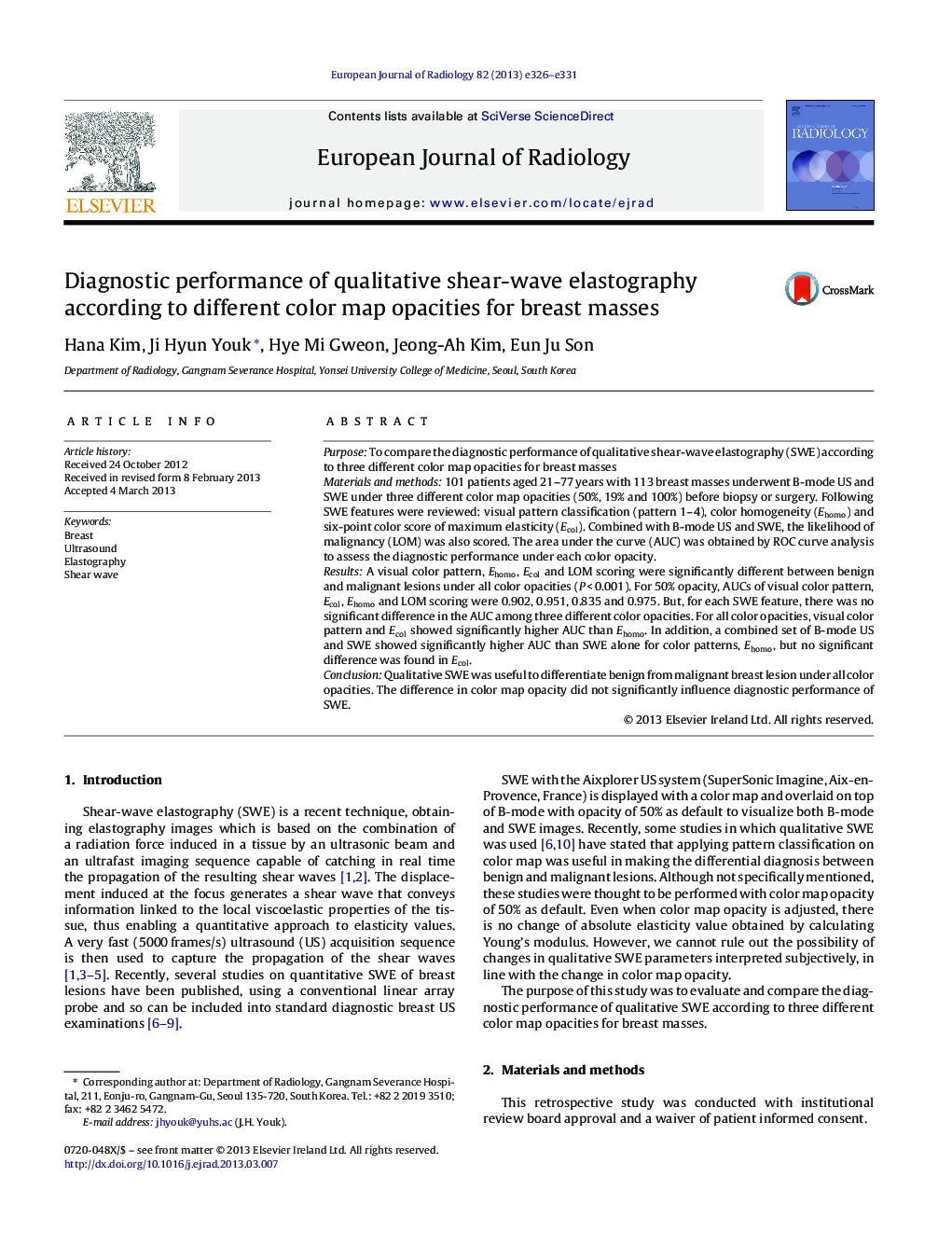| Article ID | Journal | Published Year | Pages | File Type |
|---|---|---|---|---|
| 6244590 | European Journal of Radiology | 2013 | 6 Pages |
PurposeTo compare the diagnostic performance of qualitative shear-wave elastography (SWE) according to three different color map opacities for breast massesMaterials and methods101 patients aged 21-77 years with 113 breast masses underwent B-mode US and SWE under three different color map opacities (50%, 19% and 100%) before biopsy or surgery. Following SWE features were reviewed: visual pattern classification (pattern 1-4), color homogeneity (Ehomo) and six-point color score of maximum elasticity (Ecol). Combined with B-mode US and SWE, the likelihood of malignancy (LOM) was also scored. The area under the curve (AUC) was obtained by ROC curve analysis to assess the diagnostic performance under each color opacity.ResultsA visual color pattern, Ehomo, Ecol and LOM scoring were significantly different between benign and malignant lesions under all color opacities (PÂ <Â 0.001). For 50% opacity, AUCs of visual color pattern, Ecol, Ehomo and LOM scoring were 0.902, 0.951, 0.835 and 0.975. But, for each SWE feature, there was no significant difference in the AUC among three different color opacities. For all color opacities, visual color pattern and Ecol showed significantly higher AUC than Ehomo. In addition, a combined set of B-mode US and SWE showed significantly higher AUC than SWE alone for color patterns, Ehomo, but no significant difference was found in Ecol.ConclusionQualitative SWE was useful to differentiate benign from malignant breast lesion under all color opacities. The difference in color map opacity did not significantly influence diagnostic performance of SWE.
